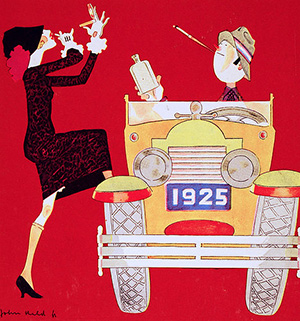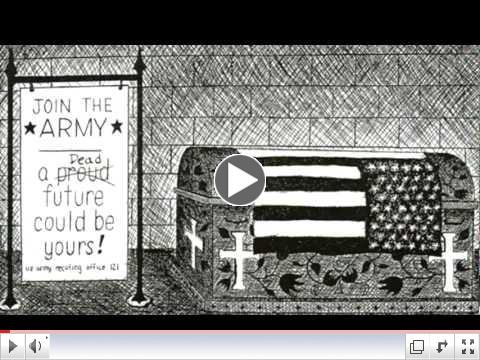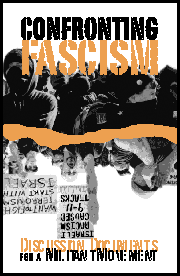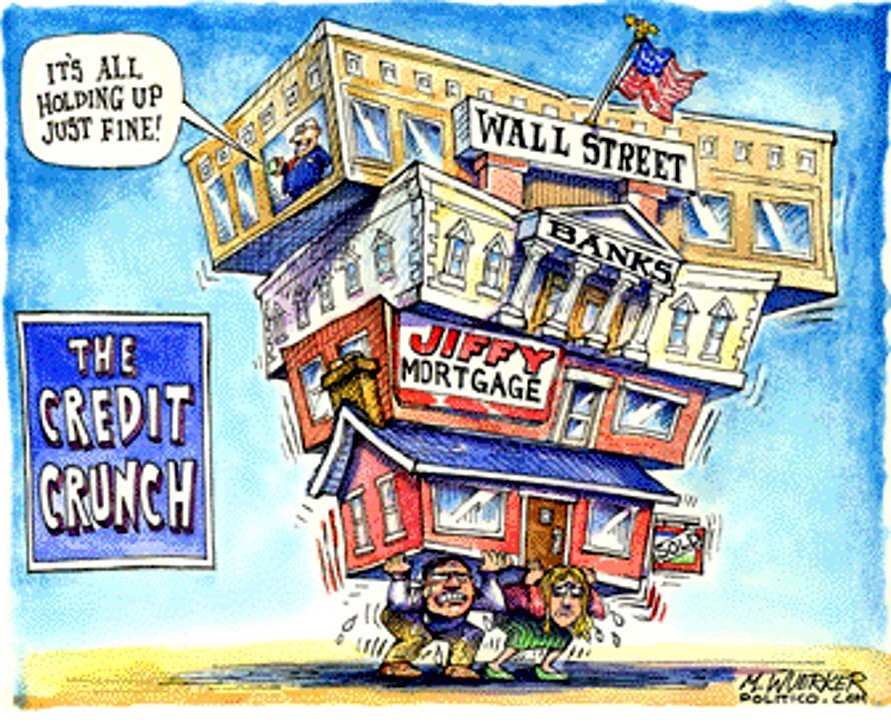Rag Radio on New Anne Braden Film 
Documentary filmmaker and University of Texas senior lecturer Anne Lewis, whose most recent work, Anne Braden: Southern Patriot, was called a "gem of a film" by folksinger and civil rights activist Joan Baez, was Thorne Dreyer's guest on Rag Radio
|
|
Mike Davis' New Left Review Article on 2012 and Beyond Downloadable from Online University of the Left Home Page
|
Dialogue & Initiative 2012 The new annual edition of our journal of discussion and analysis is now out. More than 130 pages, it includes 13 articles related to the Occupy! movement, as well as seven others vital to study in this election year. Cost is $10 plus shipping. Or get one by becoming a sustainer. Click the title to buy it directly.
|
New Issue of Mobilizer

Check out what CCDS has been doing...
|
Blog of the Week:
Z-Net
Over One Million Workers Strike in India
|
Lost Writings of SDS..
Revolutionary Youth the the New Working Class: The Praxis Papers, the Port Authority Statement, the RYM Documents and other Lost Writings of SDS
Edited by Carl Davidson 
Changemaker, 273pp, $22.50
For the full contents, click the link and view 'Preview' under the cover graphic.
|
|
By Randy Shannon, CCDS

"Everyone has the right to work, to free of employment, to just and favorable conditions of work and to protection against unemployment."
- United Nations Universal Declaration of Human Rights, December 10, 1948
I. Introduction
The "Great Recession" that began in 2007 has caused the greatest percent of job losses since the Great Depression of 1929. This crisis is the end of an era of unrestrained 'neo-liberal' capitalism that became public policy during the Reagan administration. The crisis marks a new level of instability with the growth of a global financial elite that targeted US workers and our trade unions after World War II.
|
|
Order Our
Full Employment Booklets
 |
...In a new and updated 2nd Edition
Capitalism may well collapse under its own excesses, but what would one propose to replace it? Margaret Thatcher's mantra was TINA...There Is No Alternative. David Schweickart's vision of "Economic Democracy" proposes a serious alternative. Even more fundamentally, it opens the door to thinking about alternatives. His may or may not turn out to be the definitive "successor system," but he is a leader in breaking out of the box. |
|
Quick Links...
CCDS Discussion |
Sex and the Automobile in the Jazz Age

By Peter Ling in History Today: 'Brothels on wheels' thundered the moralists but Peter Ling argues the advent of mass motoring in the 1920s was only one of the changes in social and group relationships that made easier the pursuit of carnal desire.
|
 A Memoir of the 1960s by Paul KrehbielAutumn Leaf Press, $25.64 A Memoir of the 1960s by Paul KrehbielAutumn Leaf Press, $25.64 | | Shades of Justice Video: Bringing Down a President, Ending a War |
|
Carl Davidson's Latest Book:
New Paths to Socialism

Essays on Mondragon, Marx, Gramsci and the Green and Solidarity Economies |
Solidarity Economy:What It's All About

Edited by Jenna Allard, Carl Davidson and Julie Matthaei
Buy it here...
|

Voices from the Underground Press of the 1960s, Part 2- Foreword by Susan Brownmiller
- Preface by Ken Wachsberger
$37.50 + $6 shipping
|
|
Discussion Documents for a Militant Movement

By Don Hamerquist
|
|
|
|
An Invitation to CCDSers and Friends...
 Heads They Win, Tails We Lose: Reject False Options
We're the Committees of Correspondence for Democracy and Socialism...Do you have friends who should see this? Pass it on...Do you have a blog of your own? Others you love to read every day? Well, this is a place where you can share access to them with the rest of your comrades. Just pick your greatest hits for the week and send them to us at carld717@gmail.com!
Most of all, it's urgent that you defend voter rights, plan for 2014 races now, oppose austerity, make solidarity with the Occupy! movement and end the wars! We're doing more than ever, and have big plans. So pay your dues, make a donation and become a sustainer. Do it Now! Check the link at the bottom...
|

By Jackie Tortora
AFL-CIO Now! via Portside
The AFL-CIO Executive Council today called on Congress to repeal - not replace - the economically destructive budget cuts that Republicans in Congress are using as leverage to demand Social Security, Medicaid and Medicare benefit cuts.
If the sequester is to be replaced, in whole or in part, the council called for closing tax loopholes for Wall Street and the wealthiest 2%, which would minimize harm to the economy.
In its statement, 'No More Manufactured Crises - Disarm the Hostage Takers', the council said:
"The solution is to disarm the hostage takers so they no longer can hold the economy hostage to get their way. Disarming the hostage takers means repealing "sequestration" - not replacing it. Across-the-board cuts would increase unemployment and harm the economy, but so would replacement cuts of the same size.
"There is no economic need to replace "sequestration" or meet any arbitrary deficit reduction target. Further fiscal austerity before the United States returns to full employment only would weaken the economy and cost jobs. If the "sequester" is to be replaced, it should be replaced in a way that minimizes drag on the economy - which is by raising additional revenues from the wealthiest households and corporations. Since January 2011, 70 percent of deficit reduction has been through discretionary spending cuts, which is an important reason why the recovery has been so sluggish. Under no circumstances should the "sequester" be replaced by furloughs for federal employees, who already have sacrificed $103 billion to reduce the deficit."
The Executive Council statement also called on Congress once again to reject Republican ransom demands to cut Social Security, Medicaid and Medicare benefits, which would only encourage more hostage taking.
"[G]iving in to the ransom demands of the hostage takers - and giving them political cover - will not put an end to these manufactured crises. On the contrary, it will only encourage more hostage taking. The only solution is to disarm the hostage takers and allow the American people to decide for themselves - without bullying or threats or coercion or backroom deals - whether they want to cut Social Security, Medicaid and Medicare benefits to pay for tax breaks for Wall Street and the wealthiest 2% of Americans."
The statement argues that only by standing up to the hostage takers and taking away their leverage can we "focus on the urgent challenge of fixing the economy, raising wages, investing in our people and putting America back to work."
...(Click title for more)
|
|

Are Big Banks a Bunch of Organized
Criminal Conspiracies?
By Les Leopold
Alternet.org
Feb 27, 2013 - Are too-big-to-fail banks organized criminal conspiracies? And if so, shouldn't we seize their assets, just like we do to drug cartels?
Let's examine their sorry record of deceit and deception that has surfaced in just the past two months:
Loan Sharking
You want to get really, really pissed off? Then read "Major Banks Aid in Payday Loans Banned by States [3]" by Jessica Silver-Greenberg in the New York Times (2/23/13). In sickening detail, she describes how the largest banks in the United States are facilitating modern loansharking by working with Internet payday loan companies to escape anti-loansharking state laws. These payday firms extract enormous interest rates that often run over 500 percent a year. (Fifteen states prohibit payday loans entirely, and all states have usury limits ranging from 8 to 24 percent. See the list [4].)
The big banks, however, don't make the loans. They hide behind the scenes to facilitate the transactions through automatic withdrawals from the victim's bank account to the loansharking payday companies. Without those services from the big banks, these Internet loansharks could not operate.
Enabling the payday loansharks to evade the law is bad enough. But even more deplorable is why the big banks are involved in the first place.
For the banks, it can be a lucrative partnership. At first blush, processing automatic withdrawals hardly seems like a source of profit. But many customers are already on shaky financial footing. The withdrawals often set off a cascade of fees from problems like overdrafts. Roughly 27 percent [5]of payday loan borrowers say that the loans caused them to overdraw their accounts, according to a report released this month by the Pew Charitable Trusts. That fee income is coveted, given that financial regulations [6] limiting fees on debit and credit cards have cost banks billions of dollars.
Take a deep breath and consider what this means. Banks like JPMorgan Chase provide the banking services that allow Internet payday loansharks to exist in the first place, with the sole purpose of breaking the state laws against usury. Then Chase vultures the victims, who are often low-wage earners struggling to make ends meet, by extracting late fees from the victims' accounts. So impoverished single moms, for example, who needed to borrow money to make the rent, get worked over twice: First they get a loan at an interest rate that would make Tony Soprano blush. Then they get nailed with overdraft fees by their loansharking bank.
For Subrina Baptiste, 33, an educational assistant in Brooklyn, the overdraft fees levied by Chase cannibalized her child support income. She said she applied for a $400 loan from Loanshoponline.com [7] and a $700 loan from Advancemetoday.com [8] in 2011. The loans, with annual interest rates of 730 percent and 584 percent respectively, skirt New York law.
Ms. Baptiste said she asked Chase to revoke the automatic withdrawals in October 2011, but was told that she had to ask the lenders instead. In one month, her bank records show, the lenders tried to take money from her account at least six times. Chase charged her $812 in fees and deducted over $600 from her child-support payments to cover them.
Let's be clear: JPMorgan Chase, the big bank that supposedly is run oh-so-well by Obama's favorite banker, Jamie Dimon, is aiding, abetting and profiting from screwing loanshark victims.
What possible justification could anyone at Chase have for being involved in this slimy business? The answer is simple: profit. Dimon and company can't help themselves. They see a dollar in someone else's pocket, even a poor struggling single mom, and they figure out how to put it in their own. Of course, everyone at the top will play dumb, order an investigation and then if necessary, dump some lower-level schlep. More than likely, various government agencies will ask the bank to pay a fine, which will come from the corporate kitty, not the pockets of bank executives. And the banks will promise -- cross their hearts -- never again to commit that precise scam again.
(Update: After the publication of Jessica Silver-Greenberg's devastating article, Jamie Dimon "vowed on Tuesday to change how the bank deals with Internet-based payday lenders that automatically withdraw payments from borrowers' checking accounts," according to the New York Times [9]. Dimon called the practices "terrible." In a statement, the bank said, it was "taking a thorough look at all of our policies related to these issues and plan to make meaningful changes.")
Money Laundering for the Mexican Drug Cartels and Rogue Nations
HSBC, the giant British-based bank with a large American subsidiary, agreed on Dec. 11, 2012 to pay $1.9 billion in fines for laundering $881 million for Mexico's Sinaloa cartel and Colombia's Norte del Valle cartel. The operation was so blatant that "Mexican traffickers used boxes specifically designed to the dimensions of an HSBC Mexico teller's window to deposit cash on a daily basis," reports Reuters [10]. They also facilitated "hundreds of millions more in transactions with sanctioned countries," according to the Justice Department [11].
Our banks got nailed as well. "In the United States, JPMorgan Chase & Co, Wachovia Corp and Citigroup Inc have been cited for anti-money laundering lapses or sanctions violations," continues the Reuters report. My, my, JPMorgan Chase, the biggest bank in the U.S. sure does get around.
And the penalty? A fine (paid by the HSBC shareholders, of course, that amounts to 5.5 weeks of the bank's earnings) and we promise - honest -- never to do it again....(Click title for more)
|
|
By Meteor Blades
Daily KOS
In May of 1961, having graduated the previous year from Harvard Law School, Antonin Scalia was nearing the end of a year of traveling in Europe with his new wife. The same month, John Lewis and 12 other Freedom Riders, seven white and six black, were traveling on a Greyhound bus and a Trailways bus, headed South to protest segregated public transportation and test a fresh Supreme Court decision banning the practice. In Rock Hill, South Carolina, he and two other Freedom Riders got the first beating of their trip after leaving the bus to use public restrooms.
In Anniston, Alabama, the Trailways bus was attacked by a Ku Klux Klan mob, and firebombed after the doors were jammed. In Birmingham, Lewis and the nine other Greyhound Freedom Riders were arrested there and held overnight. President Kennedy arm-twisted the governor into providing a safe-conduct escort to take the riders from Birmingham to Montgomery, but when they arrived, the escort vanished and a mob appeared. As one of the riders, James Zwerg, stepped off the bus, someone shouted "Kill the nigger-loving son of a bitch!" With clubs and fists they attacked Zwerg, Lewis and other riders, as well as reporters and photographers. The cops, many of them Klansmen or sympathizers, did not show up for 20 minutes.
Three years later in 1964, now head of the Student Non-Violent Coordinating Committee, John Lewis coordinated Freedom Summer, the project in Mississippi where several hundred of us registered black voters. I was fortunate to have two training sessions led by Lewis, who was beaten and arrested twice that summer.
The next year, in March 1965, Lewis had his skull fractured by cops blocking a protest march over the Pettus Bridge in Selma, Alabama.
By the time he was 25 years old, Lewis had suffered more than 40 arrests and a dozen beatings, some of them savage. The man displayed his courage again and again and again in the struggle to defeat Jim Crow.
One of the key pieces of legislation to accomplish that, the Voting Rights Act of 1965, was introduced by Lyndon Baines Johnson while Lewis was still recovering from the Selma beating. His head still bandaged, Lewis watched the speech on television with Martin Luther King, Jr.
That law didn't immediately end attacks on voters' rights. States or jurisdictions within states covered by the law continued to innovate new discriminatory measures whenever the federal government, either the courts or the Department of Justice, knocked down the latest effort to keep blacks, or Latinos and American Indians from exercising their fundamental right to vote. Under Section 5 of the law, the government didn't have to wait until after a discriminatory law was in place before taking action. The provision instead requires covered jurisdictions to clear any changes in the voting process in advance. Hundreds of changes have been blocked or altered under the provision.
That's not just history. Last year, voter discrimination in Texas, Florida and South Carolina was blocked by the authority Congress approved in 1965 and has renewed four times since. The last time was 2006, when the Senate voted to do so unanimously and the House overwhelmingly after 10 months of review and 21 hearings.
Antonin Scalia spit on the Voting Rights Act Wednesday, spit on voters protected by the law, spit on the struggle won by John Lewis and other courageous men and women at great cost, sometimes their very lives. Scalia labeled Section 5 "the perpetuation of racial entitlement." And he suggested that those senators and representatives who favored renewing the act in 2006 didn't really mean to, but only did so because they would not gain politically from voting against it. ...(Click title for more)
|
Michael Ratner: Bradley Manning Tells Court Public Have the Right to Know About US War Crimes
 | Michael Ratner is currently a legal adviser to Wikileaks and Julian Assange. He and CCR brought the first case challenging the Guantanamo detentions and continue in their efforts to close Guantanamo. Mr. Ratner speaks on his own behalf and not for any organization with which he is affiliated.
|
|
The first batch of products produced under workers' control
From USLive,org
Feb. 18, 2013 - The workers of Vio.Me., a building materials factory in Thessaloniki, Greece, which was abandoned by its owners, have been unpaid since May 2011. At a general assembly they decided to occupy the factory and operate it under direct democratic workers' control.
After a year-long struggle that has attracted attention and solidarity in Greece and worldwide, they started production on February 12, 2013, after three days of intense mobilization.
This is the first experiment in industrial self-management in crisis-hit Greece, and the workers of Vio.Me. are confident this is going to be only the first in a series of such endeavours.
The mobilization kicked off with a big assembly of the workers and solidarity organizations and individuals in a central downtown theatre on Sunday evening. Here the course of action of the solidarity movement was discussed, and everyone had the chance to take the microphone and to express their opinion on the workers' struggle.
March through Thessaloniki in support of Vio.Me workers
On Monday evening there was a march in the city centre followed by a huge benefit concert with several well-known folk bands and singers. Among them Thanassis Papakonstantinou, one of the most important contemporary Greek songwriters who is in a sense "part of the movement" since he always supports with word and deed the efforts of society for self-determination. The attendance exceeded everyone's expectations.
Unfortunately about a thousand people didn't manage to get in, as the stadium was packed. The stellar moment of the night was when the workers took the microphone and explained their vision of another society, based on social justice, solidarity and self-management. Five thousand people were applauding, shouting and chanting songs of support. It was then that everyone realized that this endeavour is bound to succeed!
Early next morning the mobilization went on with a vibrant march towards the factory. The workers were already in their positions and the production was triumphantly kick-started in front of the cameras of national, local and alternative media. The workers organized a guided tour of the factory and explained all the details of the production process to journalists and participants in the solidarity movement.
There is still a long road ahead: The costs of production are high, access to credit is impossible and getting a part of the market in times of recession is uncertain. The workers are however optimistic: The proceeds from the benefit gig and the donations of supportive groups and individuals collected through viome.org should be enough to keep the company afloat in the first few months. And the support of the social movements means many of the products will be distributed through the existing structures of social and solidarity economy.
The workers of Vio.Me. are already researching new cleaning products, based on non-toxic ecological ingredients, appropriate for home use. The factory makes quality building materials (mortars, plasters, tile adhesive paste and jointing materials, waterproof grouts, etc.) and the workers know very well how to improve the quality even more while lowering the production costs and hence the price. The challenge is now to find a market for these materials, either within Greece or in the surrounding Balkan countries. Some products can be shipped even further, so they could be distributed through the international solidarity movement as well.
The 40 workers of Vio.Me. and hundreds of participants in the solidarity movement have for three days lived an unforgettable experience, which however is only the start of a long and difficult road. Now more than ever we need to be united and strong, determined to build a new world based on solidarity, justice and self-management!
|

By Rebecca Sive
Huffington Post
Feb 28, 2013 - Illinois's second congressional district seat, held by Jesse Jackson, Jr. for 17 years, is a big political prize: a safe seat for Democrats, winning the Democratic primary is tantamount to winning the general. The seat is not likely to be open again anytime soon.
District voters, wearied by the saga of Jackson's downfall, and by his apparent inability to serve the district, were looking for someone who cared. The result was that once Jackson resigned, a couple dozen names were tossed around. The Election Day Democratic primary ballot included 14 of them.
At the start, among the better known names was state senator Donne Trotter, whose years of legislative experience and close ties to powerful political leaders appeared to make him a frontrunner. Then, he was arrested for carrying an unlicensed gun. With at least a gun killing a day in Chicago, a gun-toting candidate, no matter his clout, was not a plan. No campaign for him.
Viable candidates did include Anthony Beale, a long-time Chicago city council member; Toi Hutchinson, a young, up-and-coming state senator; Debbie Halvorson, a former congresswoman who lost last year's primary to Jackson; and, last, but now first, Robin Kelly, a former state representative, chief of administration for Cook County board president Toni Preckwinkle, and chief of state for former state treasurer Alexi Giannoulias.
Reflecting on why Kelly prevailed -- for there was no dispositive reason to think she would when I started getting fundraising calls in December -- I realize Kelly's campaign is a textbook case for women who want to run to win. Here is my thinking on Kelly's take-aways.
First, the "don'ts."
-- Don't wait to be asked, especially if others are considering running. By the time you (may be) get asked, you'll be perceived as a not-so-serious latecomer. Late-comers don't win.
-- Don't fear other women candidates. You're not running because you are a woman. You are running because you have something to contribute to public decision-making, of course reflecting your life experience as a woman, giving you a unique understanding of policy issues that affect women (that is pretty much all issues; keep reading), but not only because of that.
-- Don't fear clout. Use it. Clout producers winners by providing campaign workers, endorsers, community allies and behind-the-scenes influencers. Since your male (and, increasingly, female) competition won't shy away from using every advantage, you shouldn't either.
--Don't be shy about welcoming clout that is campaign cash. There is a lot of naysaying about the role of Michael Bloomberg's political action committee in Kelly's victory. (According to news reports, Bloomberg's PAC spent millions of dollars, buying TV exposure Kelly had no other way to purchase.) But, as the late Illinois US Senator Paul Simon, an advocate of campaign finance reform, frequently reminded us: "I'm not going to unilaterally disarm." You shouldn't either.
-- Don't be deterred if it takes endorsers a while to come around publicly. You never know what's really going on behind the scenes. Kelly received the endorsement of Jan Schakowsky, her presumptive sister in the Illinois congressional delegation -- and other Chicago-area Members of Congress -- thirteen days before Election Day. Nine days before, Preckwinkle endorsed. Then, all worked to get her elected.
Bottom line on the don'ts: Women win the same way men do. There is no special dispensation because you are a woman candidate. Do what you have to do.
Second, the "do's":
-- Do run on an issue that broadly concerns your community that can also be framed as a "women issue." In Kelly's case, the issue was gun violence. Ever take a look at the grieving mourners at all those funerals for dead Chicago children? They are mostly women....(Click title for more)
|
 Ron Jacobs looks back at some of the legendary Dylan's best-known biographical songs and what they've meant for the struggle for Civil Rights in the US.
By Ron Jacobs
Red Wedge
Feb 25, 2013 - When people think of Bob Dylan, it's unlikely very many consider him a biographer. Yet, he does write songs about people. I don't mean that in a general sense, either. I mean he literally writes songs about people. Some of those songs are about people that only Dylan knows or at least only Dylan knows who they are about. Others are about people most of us have heard of or heard of because of a song Dylan wrote.
 Recently, I was choosing some images from the web for a display concerning the Emancipation Proclamation and the 1963 March on Washington for Jobs and Justice. As I clicked my way in and out of websites I came across a grainy photo of Bob Dylan, Joan Baez, Harry Belafonte and other musicians on the stage at the aforementioned march. This got me to thinking about Bob Dylan and his songs concerning the racism that is part of the definition of these United States. Then I got to thinking about those Dylan songs that name people; even more specifically, the songs that named people that were famous in their own right. "Joey" came to mind. Upon examination, though, this song stands out as an anomaly in the Dylan catalog. Not only is Joey Gallo an ambiguous hero at best, Dylan's lyrics do not really attempt to make a point, unlike the other songs in this rather loose set. Then I narrowed the whole process down to songs that are tributes to individuals as opposed to songs which portray an incident featuring an individual who is either acting or being "acted upon." A song in the former category would be the dark tale Dylan tells in "The Ballad of Hollis Brown." This song is a tale of a farmer driven to the simultaneously horrendous and protective act of murdering his family because of economic ruin. Songs that fall in the latter category include "The Death of Emmett Till" and "The Lonesome Death of Hattie Carroll." Both tunes describe an incident of racist injustice that not only goes virtually unpunished but, in Dylan's telling, is symptomatic of an evil at home in these United States. Indeed, it is not just at home, but is one of the darkest elements in the myths that describe the nation. Emmett Till was more than just a boy who looked the "wrong" way at a white woman down South. He was a threat to white supremacy and its falsehood. Millions of men and women paid a price quite similar to Till's in slavery, lynchings, and prisons. Hattie Carroll lost her life when a rich white man carelessly and callously killed her with his cane. Her killer's punishment was inconsequential: six months for murder.
Blind Willie McTell is perhaps most famous nowadays for his song "Statesboro Blues," most likely titled after the city he grew up in. Although McTell was somewhat well-known on the blues circuit during the 1920s and 1930s, most folks who know this song today know it because of the Allman Brothers. Their version is electric and extended. McTell played a fluid twelve-string and the occasional slide. He live for sixty years and played throughout the southern United States in a style of picking known as Piedmont -- named after the region of the Carolinas it originated in. While Bob Dylan was recording songs for the album eventually known as Infidels, he recorded his song "Blind Willie McTell." A masterpiece of a song from a man who has many such songs to his name, Dylan's work is about much more than the blues singer Willie McTell. It is an angry message transmitted for an angry god.
Even more, it is about a people and a nation that continues to suffer what Abraham Lincoln correctly identified as "the woe due to those by whom the offense came." Just as Mr. Lincoln told the nation in his Second Inaugural Address that perhaps "every drop of blood drawn with the lash shall be paid by another drawn with the sword," so does Dylan close his song with a parallel observation and warning: "Well, God is in His heaven / And we all want what's His / But power and greed and corruptible seed / Seem to be all that there is." The entire song is written in the minor with the piano eventually replacing the guitar as the dominant instrument. One sees images of slave auctions, tenant shacks, Ishmael Reed's Arthur Swille and Raven Quickskill, and Neil Young's southern man; Christopher Dorner and Barney Fife; Richard Wright's Bigger Thomas and the past and future Imperial Wizards of the Ku Klux Klan; Huey Newton, Oscar Grant, and Nina Simone. The cries of the whipped and the sound of the lashes become as real as the silence of solitary in today's supermax prisons.
I remember hearing George Jackson had been killed a few hours after it occurred. The news reports coming in from the AP over Armed Forces Radio were sketchy and most notable for the information they did not provide. European broadcasts were somewhat more complete but all of the reports echoed the official line that Jackson had been trying to escape prior to his murder. We still don't know exactly what happened. The theory that makes the most sense to me is that he was planning to escape and had been working out the details with a section of the Bay Area Black Panthers, their mutual allies and a probable police agent who tipped off the authorities and thereby ensured Jackson's murder.
It's difficult to explain the power George Jackson's words and life story had when his first book Soledad Brother was published. In a world hungry for men and women who had lived a life of wretchedness and risen from those roots, Jackson's was a life that indicted the evils rooted in slavery and US capitalism while providing hope that this world could be changed. His brother's heroically futile attempt to free him from the prison George had been exiled to only enhanced his revolutionary and ultimately tragic mystique. So, too, did the arrest and imprisonment of Jackson's lover and comrade, Angela Davis.
My thoughts upon hearing Bob Dylan's tribute to Jackson, simply titled "George Jackson," were that even Bob Dylan, the rock superstar and (by then) recluse was not immune to the meaning of Jackson's life and death. A poet, after all, lives to discover a meaning in the world that he exists in. For a poet like Dylan, the story of George Jackson confirmed his growing understanding that the scourge of racism was the defining condition of the country he lived in. Indeed, as he explained in a 2012 interview:
This country is just too fucked up about color. It's a distraction. People at each other's throats just because they are of a different color. It's the height of insanity, and it will hold any nation back -- or any neighborhood back. Or any anything back. Blacks know that some whites didn't want to give up slavery -- that if they had their way, they would still be under the yoke, and they can't pretend they don't know that. If you got a slave master or Klan in your blood, blacks can sense that. (Rolling Stone 9/27/2012)
In other words, as far as Dylan is concerned, there is very little hope. Perhaps the most memorable lines in "George Jackson" are contained in this quatrain, "Sometimes I think this whole world/ is one big prison yard/Some of us are prisoners /and some of us are guards." These lines describe the nation's dilemma better than any treatise might. Until the guards are willing to accept the fact they are as imprisoned by the legacy of racism as the prisoners they guard, beat and kill, none of us will be free to leave the prison that is these United States....(Click title for more)
|

Moscow 1937
By Karl Schogel
Polity
In 1937, the city was both a world capital of artistic ferment and a slaughterhouse.
 Reviewed By Benjamin Schwarz Reviewed By Benjamin Schwarz
The Atlantic, March 2013
In this dazzling 650-page feat of historical reconstruction, Karl Schlögel, a professor at the European University Viadrina Frankfurt (Oder), has summoned up a great city-what was once the New Jerusalem for much of the world's intelligentsia and downtrodden-as it consumed itself in an orgy of fear, paranoia, denunciations, mass arrests, suicides, and executions.
Schlögel's book is a fragmentary yet meticulous social history of Moscow in the grip of the Great Terror-the period from the summer of 1936 to the end of 1938, when the already sanguinary Bolshevik regime let loose on itself its apparatus of suppression, purging, in waves, all Soviet institutions and at all levels of society, from the nomenklatura, the highest echelons of administrative, cultural, and scientific life, through the high command of the Red Army, to the engineers and apparatchiks, down to the factory workers and peasants. It is an almost impossibly rich masterpiece.
In Moscow 1937, Schlögel uses as a leitmotif the themes and settings of Mikhail Bulgakov's great allegorical 1937 novel of the city under the Terror, The Master and Margarita. He opens with an exegesis of Margarita's fantastical flight over the city in the 1930s, which allows him to establish the scene and dissect Moscow's cultural and social geography. For the remainder of the book, he continues to take the reader on a tour of the urban center-the late-19th-century townhouses built by the nobility and later appropriated by the party; the hundreds of theaters that littered the still-drama-mad city; the communal apartments crammed with recent migrants from the countryside; the fancy shops selling sturgeon and czarist antiques to the Soviet elite and the endless flow of visiting progressives from the West; the just-completed marvel of Soviet engineering that brought the five seas to Moscow, the Moscow-Volga Canal (whose opening celebration coincided with the arrest, persecution, and execution of the overseers of its construction); Spaso House, the American ambassador's residence, site of incongruously clinquant balls and receptions; the spacious, refined apartments where the new Soviet upper class held glittering salons, at which the likes of Shostakovich and Isaac Babel mixed with the high officials of the NKVD, the secret police (a group that deeply prized its literary and artistic connections); the NKVD's immense network of offices, garages, shooting ranges, isolation cells, interrogation chambers, and execution cellars, metastasizing from the citadel-like headquarters at the Lubyanka and devoted to the investigation, arrest, incarceration, deportation, and slaughter of enemies of the people.
Schlögel dexterously mines an array of sources. He assesses archaeological reports from one of the NKVD's killing fields, the Butovo shooting range on the outskirts of the city, to reveal the sociology and tempo of the slayings. He analyzes the occupancy records of the most exclusive apartment block of the party elite, the fortress-like House on the Embankment-made famous by Yuri Trifonov's eponymous novel-to disclose the terrible history of a building almost entirely depopulated in the space of a year as its nearly 2,500 occupants were imprisoned, executed, or driven to kill themselves.
Schlögel's approach marries sweep with depth. He anatomizes, for instance, Moscow's gigantic railroad yards to illuminate both the awesome expansion of Soviet infrastructure and the obvious but nevertheless wholly unpredictable way the Terror fed on that unsustainable effort, which overtaxed the railways and factories, leading to a paranoid hunt for the "saboteurs" and "wreckers" responsible for the damage in fact done by wear and tear. He reproduces the inventory of luxuries from the apartment of Genrikh Yagoda, the head of the NKVD (1,229 bottles of wine "mainly imported ... from the 1897, 1900 and 1902 vintages," 43 astrakhan pelts, 3,915 pornographic photos and films, 11,075 imported cigarettes, "including Egyptian and Turkish" ones), compiled by his former henchmen when the Terror turned against him. Schlögel details the gala concert at the Bolshoi Theatre that the NKVD threw for itself and its predecessor organization, the Cheka, in December 1937, on its 20th anniversary-a celebration presided over by Yagoda's successor, Nikolai Yezhov, who in just under three years would himself be shot by the very organization he was lauding. Throughout, Schlögel trains a sharp eye on telling details: the machinery for dispatching to the provinces the vast crop of orphans that the Terror yielded; the Kafkaesque-no other word will do-reasons why demographers, statisticians, geologists, and, of all professions, Alpinists endured especially grim treatment; the array of cream gâteaux and petits fours on offer at the renowned Bolshevik Confectionery Factory on Leningrad Highway.
The result: Moscow 1937 is a layered, hallucinatory panorama of great precision and artifice that gives readers access to a most foreign place and time. Schlögel's analysis of the 1936 Moscow Directory, for example, generates a portrait of the magnificently varied cultural and intellectual life of a great metropolis. The 680-page Directory devoted six of its triple-columned pages to the organizations of the Academy of Sciences alone; it listed 280 "Clubs and Houses of Culture," 540 magazines, and at least three jazz bands; and it untangled the thick web of libraries that covered the city. "This diversity of social and semi-governmental institutions and organizations gives us not merely an insight into the immense complexity of an urban society," Schlögel notes with typical discernment, "but also an inkling of the huge efforts and even violence required if they are to be disciplined, levelled down and made uniform."...(Click title for more)
|
|
Become a CCDS member today!
 The
time is long past for 'Lone Rangers'. Being a socialist by your self is
no fun and doesn't help much. Join CCDS today--$36 regular, $48
household and $18 youth. The
time is long past for 'Lone Rangers'. Being a socialist by your self is
no fun and doesn't help much. Join CCDS today--$36 regular, $48
household and $18 youth.
Better yet, beome a sustainer at $20 per month,
and we'll send you a copy of Jack O'Dell's new book, 'Climbing Jacobs
Ladder,' drawing on the lessons of the movement in the South in the
1950s and 1960s.
Solidarity, Carl Davidson, CCDS |
|
|